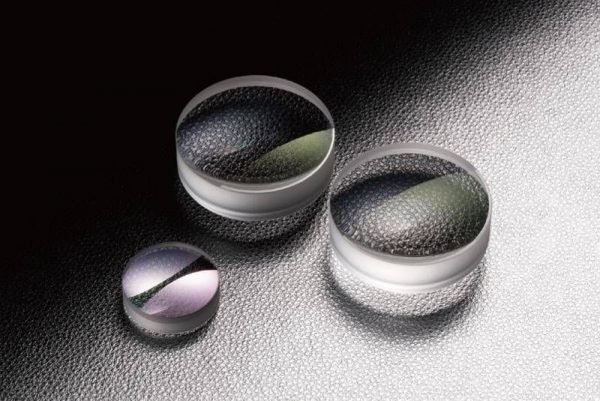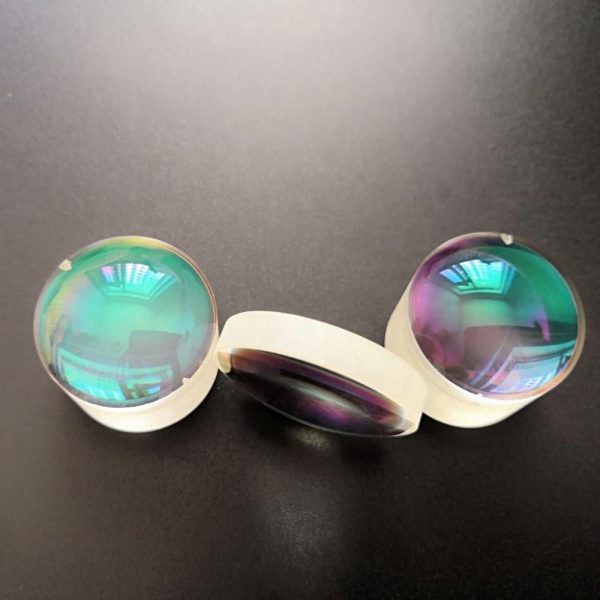Material for Achromatic lens bonding
It is generally believed that the gluing mechanism of optical lenses is that the mechanical bonding, physical adsorption, electrical attraction, mutual diffusion, and formation of chemical bonds between optical materials and optical glues cause bonding between optical parts and optical glue to bind the optical parts together. . The size of the bonding force is related to the cementing material, the material of the lens, and the like. So, what are the requirements for optical lens adhesives during the manufacturing process? Which are commonly used?

Requirements for Optical Lens Adhesives
Optical adhesives are mainly used for gluing between optical lenses. In order to ensure the gluing quality of optical lenses, the adhesive must meet the following requirements:
- Colorless and transparent, high transmittance, no fluorescence, similar to the refractive index of the glued parts
- When curing, the volume shrinkage rate is small and does not cause internal stress on the glued surface
- The mechanical strength is good, and the adhesive layer will not be cracked due to vibration and impact.
- Good chemical stability, no chemical reaction with optical materials, no deformation after long-term use
- Good environmental protection, non-toxic and harmless
- Good thermal stability, can work within a temperature range of 70~70℃, without cracking, degumming or dislocation of parts
- The gluing process is simple, and it is easy to remove the glue.

What are the commonly used optical lens adhesive materials?
Most of the adhesives used in the gluing of optical lenses belong to organic polymers, which can be roughly divided into four development stages: natural fir resin glue→epoxy resin glue→methanol glue→optical photosensitive adhesive. At present, the development of optical photosensitive adhesive is relatively rapid, and the commonly used grades are GBN-501, GGJ-1, GGJ-2 and so on.
Natural fir resin glue is simple in technology and has poor high and low temperature performance, which often causes degumming, causing the center of the lens and the angle of the prism to move, and the instrument loses the requirements of the original design.
Epoxy resin glue has small shrinkage and good optical image quality, but it has long curing time, complex process, high toxicity, and is easy to cause human skin allergies, which limits mass production.
Methanol glue bonding process is more complicated, and the shrinkage of glue is very large, which often leads to the deterioration of the image quality of optical parts. The adhesive layer has poor aging resistance, and the use time is not long, and it is easy to change color or degumming, resulting in a decrease in light transmittance.
The photosensitive adhesive is more convenient to use and has high efficiency (under UV light irradiation, it will be completely dry in about 12 minutes), small shrinkage, good optical lens image quality, good aging resistance, long-term use of the adhesive layer color does not change, the light transmittance is still not less than 90%. The grade GGJ-1 GBN-501 photosensitive adhesive is suitable for automatic centering of lenses and prisms. GGJ-2 is extremely viscous and near-solid, suitable for gluing instruments or optical parts for manual alignment.
Inspection after optical lens gluing
The relative geometric position and optical properties of the glued parts such as eccentricity, image tilt, focal length, vertex focal length, image quality, resolution and aperture can be checked on special instruments. The adhesive layer and surface quality can be checked visually or with the aid of a magnifying glass according to technical requirements. The following matters need to be paid attention to when gluing: In the effective hole of the glued part, the color of the glue layer should be close to colorless; Calculated individually for each face. Other blemishes, such as glue, mildew, oil stains, etc., are not allowed to have non-developmental blemishes other than the effective aperture.
The thickness of the lens adhesive layer generally requires an optical comparator to measure the thickness difference before and after bonding. The center error of the cemented lens is checked with a centering instrument, and the angle of the cemented prism is checked with a goniometer and an optical instrument. The surface deformation of the glued parts is caused by the internal stress caused by the solidification of the glue layer or the temperature change. Usually, the surface shape accuracy of the glued parts before and after gluing is measured by the interference method, and then the deformation caused by gluing is obtained according to the distortion of the involved pattern; the resolution or star point inspection of the glued parts can also be done; it can also be inspected by a chemical transfer function instrument. . The focal length of a cemented lens is usually measured with an optical bench or a focal length meter, and the cemented layer of the cemented piece allows interference fringes to be visible in reflected light. In addition, for the trial production of new products, shear strength, shock resistance and high and low temperature resistance tests are also carried out.
